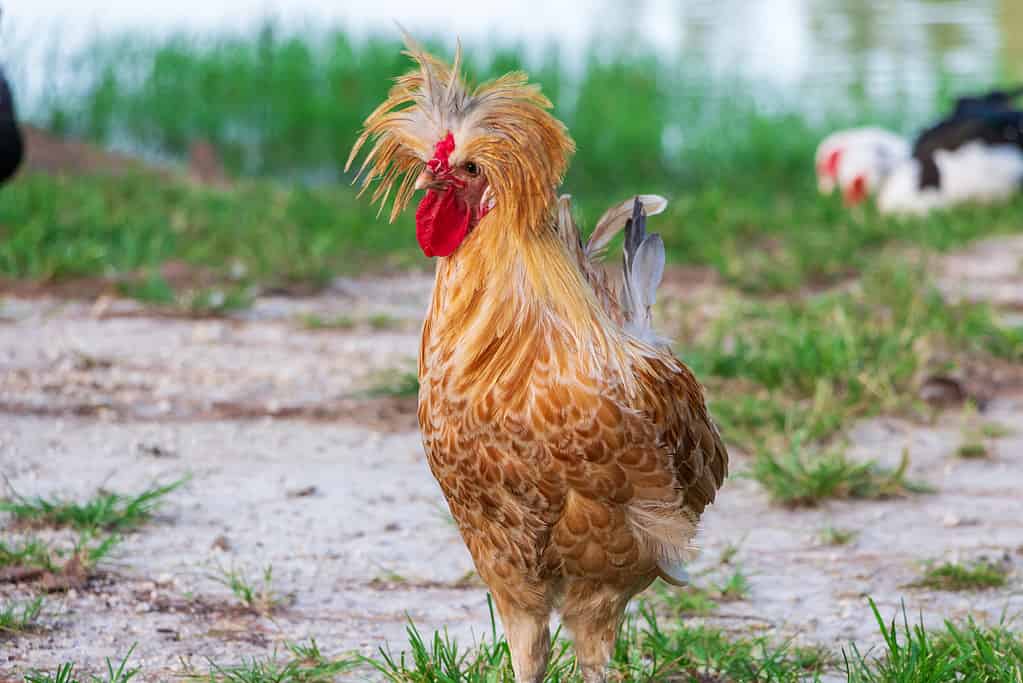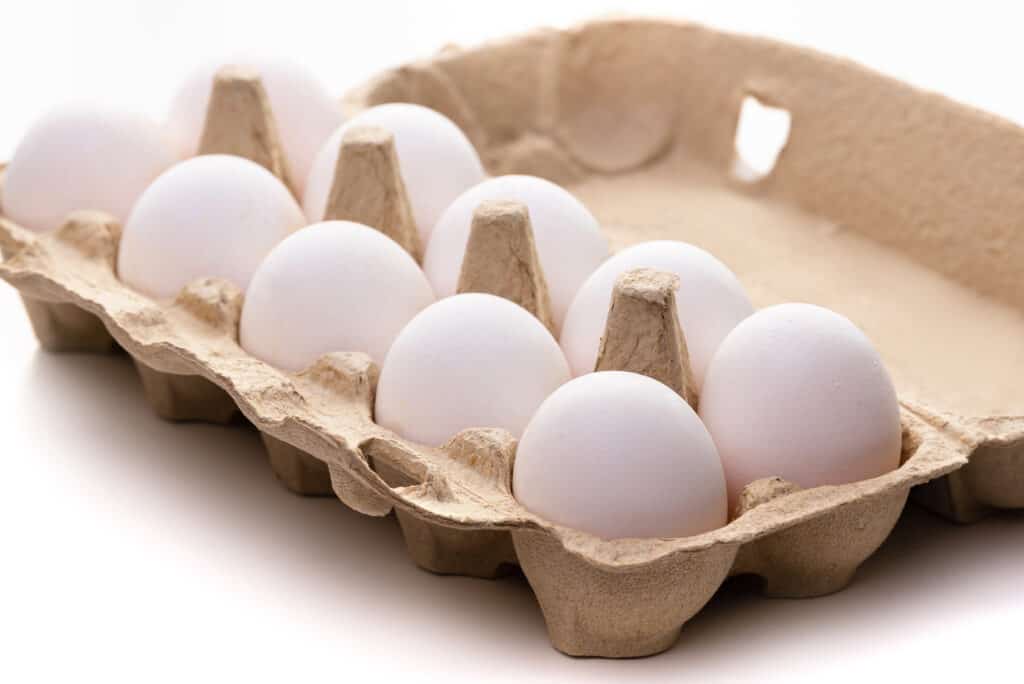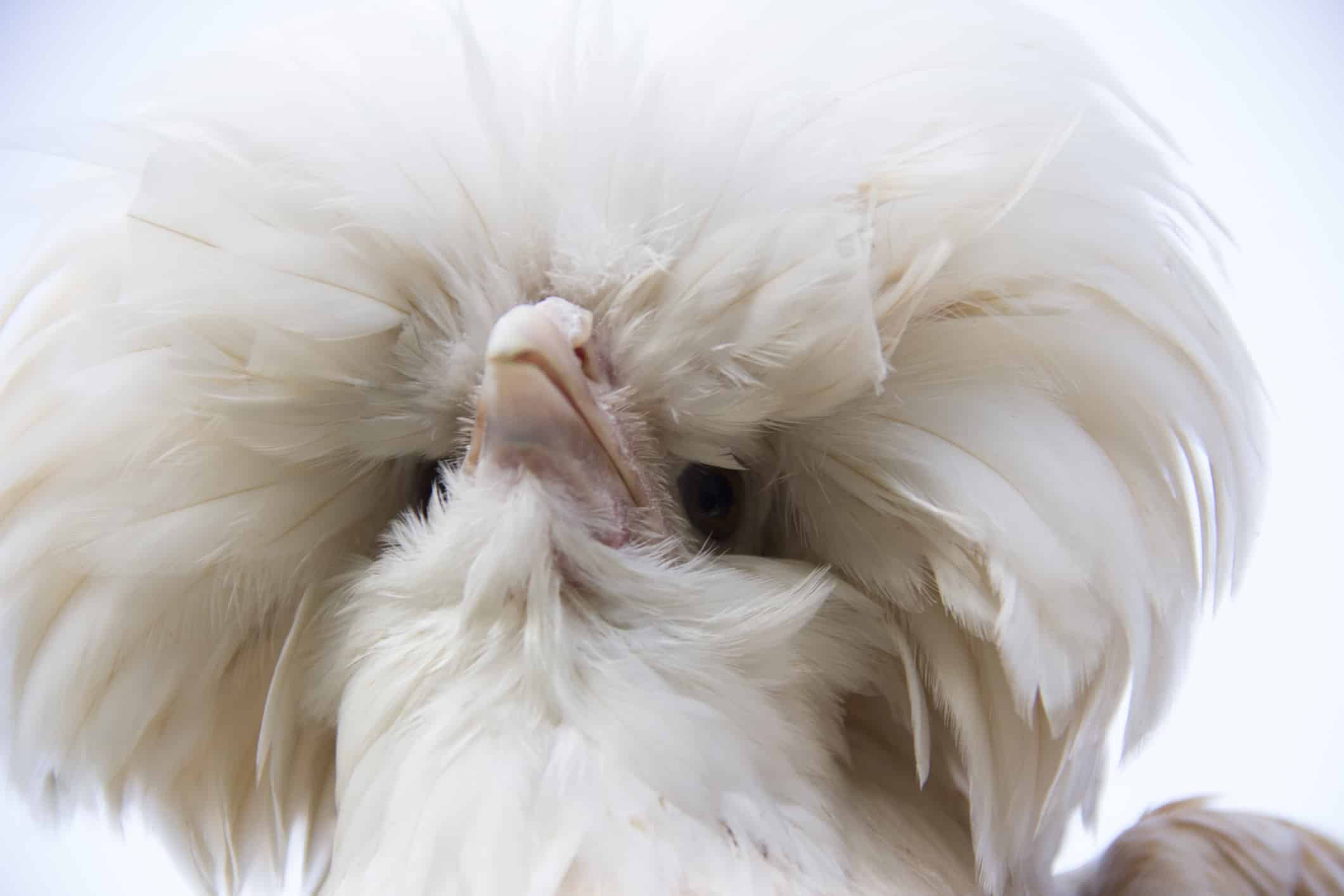There are many factors to consider before choosing your first chicken breed or even adding a new breed to your existing flock. One of those is what kind of eggs you hope to get. With as many breeds as there are in the world, there is (naturally) a wide range of egg colors, shapes, and sizes. So, how do you narrow down your search? Here, we’ll give you all the information you need to know about Polish chicken eggs. You can take that information and decide if it is right for your family and your flock.
Let’s get started!
What Are Polish Chickens?
These fascinating birds have a relatively unknown history. Their early beginnings got lost to the annals of time. However, there is evidence of them that dates back to the 1600s. Historians and researchers disagree on where this breed originated. But they almost all concur that the Dutch developed the first standardized line.
Polish chickens get their name from the unique and eye-catching crest on their heads. This large fluff of feathers gives them a distinctive appearance, though it can often hinder their eyesight. Some also have muffs and beards.
This breed is naturally calm and highly active. But Polish chickens tend to get into each other’s space if they don’t have enough room to roam. Make sure to offer them plenty of room. The other important thing to note is that because these birds are so friendly and docile, they are easy prey for larger and more aggressive breeds.
Most Polish chickens get raised as show birds, even though they have moderate egg production capabilities.

Polish chickens are docile, friendly, easy-going, and have a distinctive appearance.
©Sunshower Shots/iStock via Getty Images
How Many Eggs Do Polish Chickens Lay?
Polish chickens are not the most productive birds you can add to your flock. But they do lay a moderate number of eggs that can supplement your existing supply. Additionally, you should get a decent egg haul with several hens laying.
These birds typically lay approximately 180-200 eggs annually. That averages out to roughly 3 to 4 eggs every week. Since the number is on the lower end and not enough to feed a family, many people choose to raise them primarily as ornamental birds.
Most hens will reach egg-laying age by 20 weeks, though you will have outliers on either side.
What Type of Eggs Do Polish Chickens Lay?
Polish chickens exclusively lay white eggs. They average the same weight as large store-bought eggs.

Polish chickens exclusively lay white eggs.
©Nataliya Schmidt/Shutterstock.com
Collecting and Cleaning Chicken Eggs
Now that you have decided to start building or growing your flock, you get to enjoy freshly collected eggs! But how do you go about collecting and cleaning them? Here are some handy tips and tricks to help you get started.
- Collect eggs frequently to avoid excess breakage. Eggs that spend too much time in the coop are vulnerable to damage as the chickens move about. The best thing to do is check the coop at least once daily for new eggs.
- Feeding hens will encourage them to move away from the eggs. While Polish chickens are not known for their broodiness, it is still easier to avoid any negative interactions.
- Broken or cracked eggs are breeding grounds for dangerous bacteria. Discard any you find.
- Try to collect eggs in the morning and the evening.
- Farm-fresh eggs don’t actually need to get washed until they are ready for consumption. These eggs naturally have a coating that protects against the intrusion of harmful bacteria. Washing eggs removes this coating, and any washed eggs need to be stored in the refrigerator.
- Wipe excess feces, dirt, or feathers off (gently) with a paper towel. Feel free to use sandpaper if there is some stuck matter.
- Don’t forget to wash your hands after every egg collection! While the interior of eggs has protection against pathogens, your skin doesn’t. Washing your hands will help prevent possible contamination or illness.
- It’s OK if you’re not comfortable leaving your eggs at room temperature. But if you want to store the eggs in the fridge, they need to be cleaned first. Avoid cold water, cleaning solutions, or soaking. Instead, run them under warm water (90 degrees Fahrenheit or above). Then dry them immediately before storing them.
What Is the Nutritional Value of Polish Chicken Eggs?
Most of the time, the chicken breed doesn’t significantly impact eggs’ overall nutritional. But the chicken’s diet and lifestyle will ultimately alter the health benefits of any eggs that get laid.
Chickens that eat a more nutritious diet will lay healthier eggs. Breeds that enjoy living a free-range lifestyle and forage will produce even more nutrient-dense eggs.
That said, a 2022 research study published in Poultry Science explored the nutritional differences between Polish chicken eggs and standard store-bought eggs. The researchers discovered that Polish chickens lay eggs with higher Vitamin E and oleic acid levels.
Thank you for reading! Have some feedback for us? Contact the AZ Animals editorial team.








